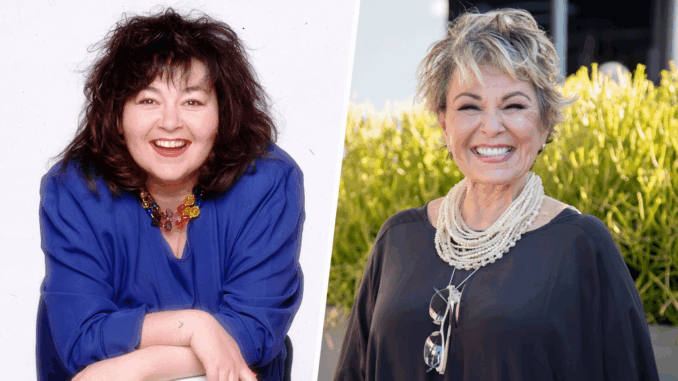
After years of laughter, heartbreak, and relatable family drama, The Conners is finally coming to an end. This series, born from the legacy of Roseanne, carried the torch for working-class representation on television in a way few shows ever have. As fans prepare to say goodbye, it’s the perfect time to look back at the cast who started it all on Roseanne and see how far they’ve come by the time The Conners wrapped up.
This is more than a simple then-and-now comparison. It’s a celebration of resilience, evolution, and the way these actors grew alongside their characters, giving us decades of unforgettable television.
The Legacy of ‘Roseanne’
Back in 1988, Roseanne debuted as a bold, unfiltered sitcom about a working-class family in Lanford, Illinois. Unlike the glossy, idealized sitcom families of the time, the Conners were messy, flawed, and real. Audiences loved it instantly, and it became a cultural phenomenon.
The Birth of ‘The Conners’
Fast forward to 2018. After controversy ended Roseanne’s revival, ABC launched The Conners, keeping the rest of the beloved cast and the heart of the story intact. Against all odds, the show thrived on its own, proving that the Conners didn’t need a matriarch to remain relevant.
John Goodman: From Dan Conner to Family Patriarch
Then: As Dan Conner, John Goodman embodied the role of the lovable, hardworking husband and dad. With his mix of humor and vulnerability, he became the blueprint for TV dads everywhere.
Now: Decades later, Goodman’s transformation is remarkable. Having overcome personal struggles and health challenges, he returned to The Conners slimmer and more grounded. Today, he carries the show as the wise, often weary, but endlessly devoted patriarch.
Laurie Metcalf: Jackie Harris Then and Now
Then: Jackie was Roseanne’s quirky, fiercely independent sister. Laurie Metcalf’s performance made Jackie unforgettable—whether she was fumbling through jobs or giving heartfelt advice.
Now: Metcalf’s career exploded beyond Roseanne, with Emmy and Tony Awards to prove it. On The Conners, Jackie evolved into a stronger, though still delightfully eccentric, presence, showing the depth of Metcalf’s comedic and dramatic chops.
Sara Gilbert: From Darlene to The Conners’ Emotional Core
Then: Darlene Conner was the sarcastic, witty daughter, always ready with a sharp one-liner. Sara Gilbert captured the voice of a generation of misfit teens.
Now: Gilbert grew into both a powerhouse actress and executive producer, shaping The Conners behind the scenes. On screen, Darlene transformed from rebellious teen to responsible mom, balancing vulnerability with her trademark wit.
Michael Fishman: The Evolution of D.J. Conner
Then: As the youngest son, D.J. brought innocence and humor to Roseanne. His character grew up before the audience’s eyes.
Now: In The Conners, D.J. was reintroduced as a father, adding layers of maturity to his role. Though his screen time was smaller compared to others, Fishman’s presence carried nostalgic weight for longtime fans.
Lecy Goranson: Becky Conner’s Journey
Then: Becky Conner’s storylines revolved around growing pains, teenage rebellion, and her dreams for the future.
Now: Goranson returned to the role as Becky, now grappling with adulthood, single motherhood, and financial struggles. Her journey mirrored the show’s themes of resilience and finding strength in hardship.
Emma Kenney: The Next Generation of Conners
Then: Not part of the original Roseanne cast, Emma Kenney entered the universe through The Conners as Harris, Darlene’s daughter.
Now: As one of the younger faces of the franchise, Kenney brought a fresh perspective, showing how the struggles of working-class families extend to a new generation.
A Show About Real Life
What made both Roseanne and The Conners resonate was their honesty. The families didn’t live in mansions or solve problems in 22 minutes. They worked long hours, worried about bills, and navigated messy relationships—just like real families do.
How the Cast Grew With the Audience
Watching the cast evolve wasn’t just about physical changes. Fans witnessed their characters tackle new life stages: becoming parents, facing loss, reinventing themselves after setbacks. It mirrored the audience’s own growth over the decades.
The Emotional Weight of ‘The Conners’ Ending
The finale isn’t just the end of a show—it’s the close of a chapter that’s been with us for nearly 40 years. For many viewers, saying goodbye to The Conners feels like saying goodbye to family.
Then vs. Now: A Cultural Shift
Back in the late ’80s, the Conners stood out because they weren’t polished. Today, with shows striving for diversity and realism, their struggles still hit home. The difference is that audiences have aged with them, turning their fictional journey into a shared cultural memory.
Why Nostalgia Matters Here
Part of the magic of looking at “then vs. now” is nostalgia. Seeing the cast side-by-side reminds us of where we were when Roseanne first aired and how much has changed since. Nostalgia isn’t just about the past—it’s about how the past shapes our present.
The Enduring Legacy of the Conners
Few shows survive this long, across generations, controversies, and spin-offs. The Conners did. And the cast’s transformation from their Roseanne days to now is proof of their staying power.
Final Thoughts
The Conners’ ending marks the close of a television era that began in 1988 with Roseanne. The cast has changed, grown, and evolved—but so have we. Seeing them then and now is more than a simple comparison; it’s a reminder of why these characters became part of our lives in the first place.
The kitchen table may be clearing for the last time, but the Conners’ impact will linger for decades to come.
